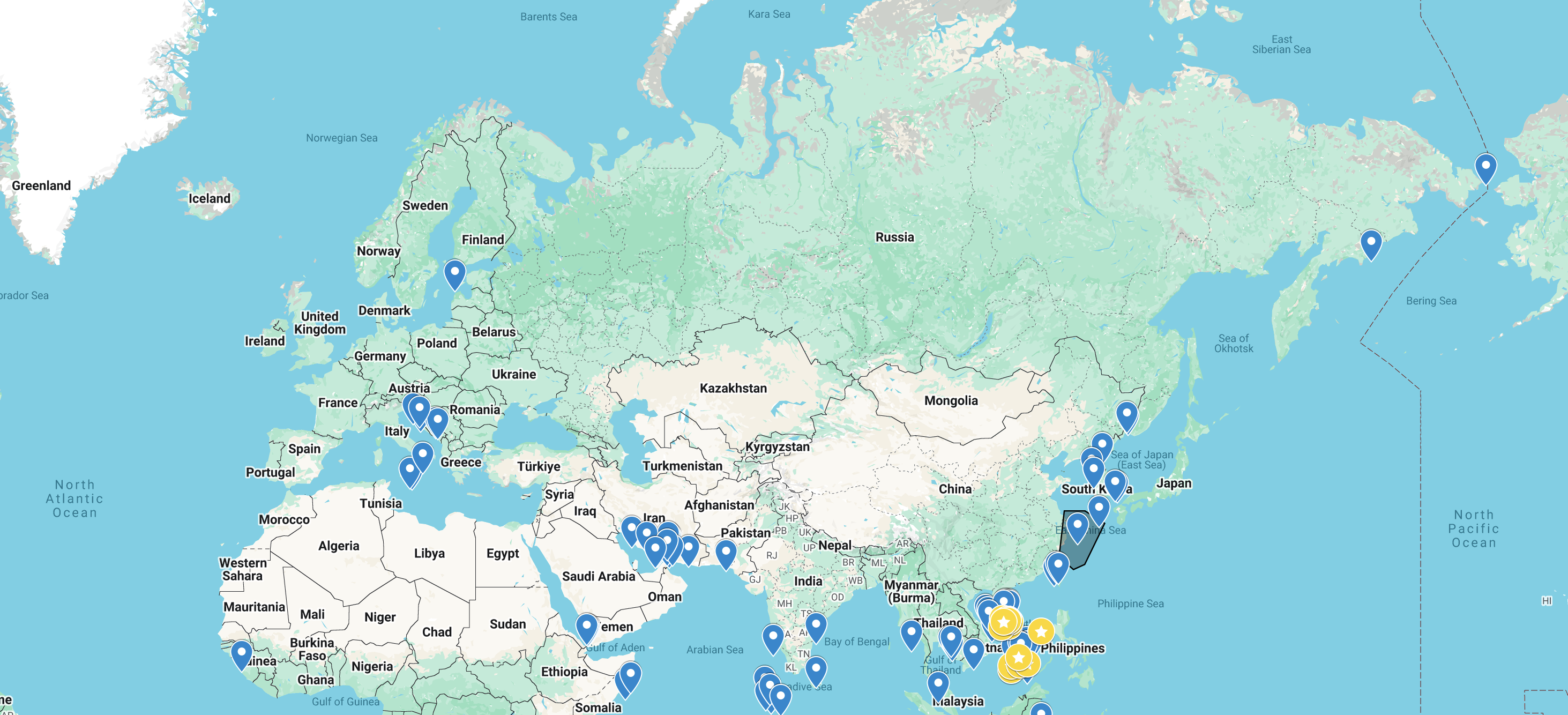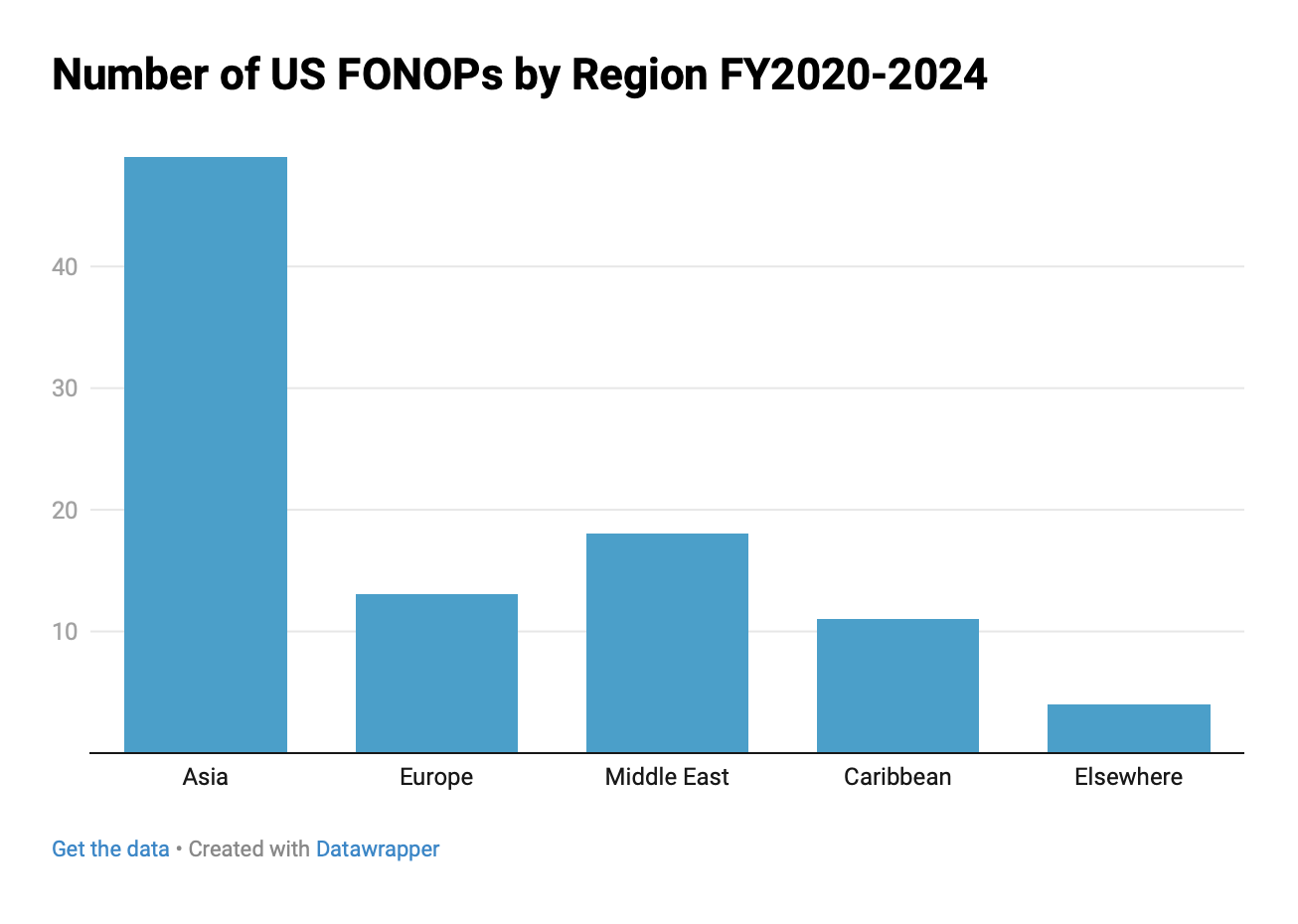As the global order tilts toward rivalry and resistance, the United States continuously upholds international laws from Geneva to the South China Sea. In the wake of waning US global dominance, President of the People’s Republic of China Xi Jinping has embarked on a campaign to claim and build military and economic infrastructure on groups of “islands” in the South China Sea. These territorial claims occur in the contested Spratly and Paracel Islands, where multiple countries claim the territorial waters surrounding these islands. These overlapping claims have heightened tensions in East and Southeast Asia. As China tries to become a regional hegemon, its neighbors, including Taiwan, Vietnam, and the Philippines, are protesting Chinese expansion into their territorial claims. The most prominent, and still ongoing, dispute is over China’s 9-dash line.
Not only are these claims overlapping, but some are inconsistent with international law. To combat these illegal claims, the United States conducts Freedom of Navigation Operations (FONOPs), which challenge territorial claims or policies that are inconsistent with international maritime law.
The UN Convention on the Law of the Sea (UNCLOS) defines specific maritime policies surrounding land masses and claims to territory. The UNCLOS determines that each country has 12 nautical miles of territorial waters, where it has jurisdiction. While states have sovereignty over these waters, they must allow foreign vessels to conduct “innocent passage,” which is any transit that does not harm the peace or security of a state. International maritime law designates three different types of land masses that states can lay claim to: islands, rocks, and low-tide elevations. Each designation comes with its own territorial and economic claims. FONOPs usually challenge restrictions on innocent passage or excessive territorial claims over areas with different legal designations.
While most discussion around FONOPs centers around China’s activities in the South China Sea, a closer look at where and how frequently these operations occur reveals a few key insights: FONOPs have a global scope, and the United States challenges excessive claims by allies as well as adversaries. The FONOPs in the South China Sea challenge maritime claims by multiple countries, including strategic partners in the US effort to curb China’s influence.
Below is a map that shows every FONOP that the United States has conducted from late 2020 until midway through this year. Through visualizing the FONOPs conducted by the United States worldwide, it’s clear these operations fulfill a greater role than just showing strength against US adversaries. These operations are global in scope and are essential to maintain international standards and laws at a time of eroding trust in the global order.

Only close to 16 percent of US FONOPs are conducted in the South China Sea or elsewhere near China. Other large areas of focus for FONOPs are the Strait of Hormuz/Arabian Gulf and the Caribbean Sea. These closely packed, strategic waterways create the conditions for overlapping and contested claims. While FONOPs have mainly been analyzed in the context of the Paracel and Spratly islands in the South China Sea, FONOPs are global in scale. This broader distribution of FONOPs encourages a more nuanced understanding of the contexts in which these operations take place. Some operations might focus more on territorial claims, while others could be focused on maintaining trade routes.

While most FONOPs are not conducted in areas claimed by China, almost half are conducted in Asia (excluding the Middle East). These other operations occur in the Maldives, Vietnam, and near South Korea/Japan. Most of these FONOPs challenge excessive claims by US allies or partners in the region. In a similar vein, the operations that occur in the South China Sea also challenge claims made by Taiwan, a crucial US ally.
While FONOPs are a useful tool for the United States to curb China’s growing claims and infrastructure in the South China Sea, they are not limited to this context. FONOPs allow for the United States to maintain its global reach and help enforce the rules-based international order. Especially as these rules come under threat, the United States must continue to hold countries accountable, allies and adversaries alike.
Under President Donald Trump’s administration, we can expect a stronger, more combative US foreign policy toward China. During Trump’s first term, FONOPs surged in the South China Sea as the threat of China’s islands was introduced. Trump’s team may identify FONOPs as a key mechanism to curb China’s influence over East Asia and defend the integrity of international law. An increase in FONOPs both around China and other U.S. adversaries can heighten their risks. Vessels and aircrafts conducting FONOPs are vulnerable to attack from foreign militaries that view these operations as violations of their laws. As a result of these risks, relations between the U.S. and its adversaries, given an already fraught geopolitical environment, may deteriorate even further. FONOPs may play an increased role in Trump’s “Peace Through Strength” agenda, but they could also cause unintended consequences and push great powers towards conflict rather than cooperation.
The map was created through compiling reports on FONOPs released by the Department of Defense and the U.S. Navy. This is not a complete or exhaustive list of every single FONOP conducted by the United States during this time period, but a compilation of publicly available reports on FONOPs conducted around the globe. There are few data points for the current fiscal year since the end-of-year report from the DOD has not been released as of this article’s writing.
Unless a specific reef or landmass is mentioned in the location tag, the locations are approximate in the area that is mentioned. There is no publicly available data for the specific paths of FONOPs, but most of these operations mainly consist of innocent passage operations on a single landmass.
